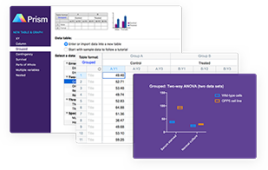Researchers
from Mount Sinai School of Medicine have developed a new computational
method that will make it easier for scientists to identify and
prioritize genes, drug targets, and strategies for repositioning drugs
that are already on the market. By mining large datasets more simply and
efficiently, researchers will be able to better understand gene-gene,
protein-protein, and drug/side-effect interactions. The new algorithm
will also help scientists identify fellow researchers with whom they can
collaborate.
Led
by Avi Ma’ayan, PhD, assistant professor of Pharmacology and Systems
Therapeutics at Mount Sinai School of Medicine, and Neil Clark, PhD a
postdoctoral fellow in the Ma’ayan laboratory, the team of investigators
used the new algorithm to create 15 different types of gene-gene
networks. They also discovered novel connections between drugs and side
effects, and built a collaboration network that connected Mount Sinai
investigators based on their past publications.
“The
algorithm makes it simple to build networks from data,” said
Ma’ayan. “Once high dimensional and complex data is converted to
networks, we can understand the data better and discover new and
significant relationships, and focus on the important features of the
data.”
The
group analyzed one million medical records of patients to build a
network that connects commonly co-prescribed drugs, commonly
co-occurring side effects, and the relationships between side effects
and combinations of drugs. They found that reported side effects may not
be caused by the drugs, but by a separate condition of the patient that
may be unrelated to the drugs. They also looked at 53 cancer drugs and
connected them to 32 severe side effects. When chemotherapy was combined
with cancer drugs that work through cell signaling, there was a strong
link to cardiovascular related adverse events. These findings can assist
in post-marketing surveillance safety of approved drugs.
The approach is presented in two separate publications in the journals BMC Bioinformatics and BMC Systems Biology. The tools that implement the approach Genes2FANs and Sets2Networks can be found online at http://actin.pharm.mssm.edu/genes2FANs and http://www.maayanlab.net/S2N.
Source: The Mount Sinai Hospital / Mount Sinai School of Medicine




